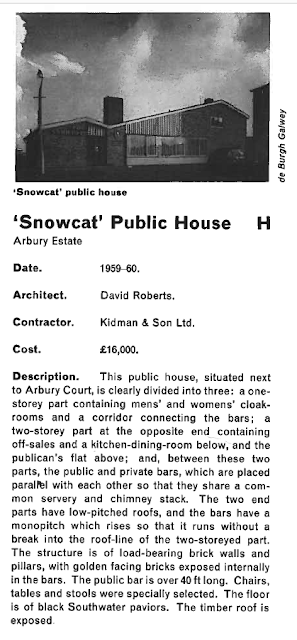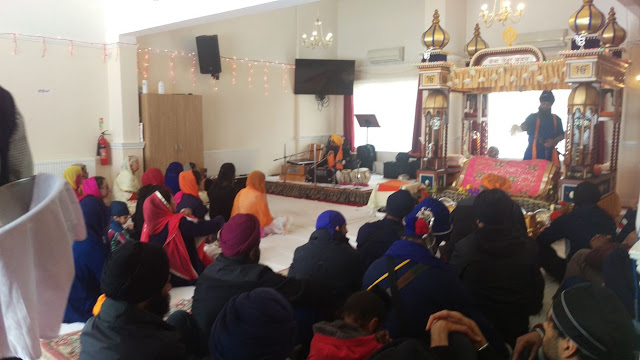In January, 2013, Arbury gained a major community first.
The Grove (formerly Snowcat) public house in Arbury Court, became the Cambridge Gurdwara, the first Sikh temple not only in Arbury, not only in Cambridge city, but in the whole of Cambridgeshire.
The building was erected in 1959 as the Snowcat public house, to serve the 'rapidly expanding Arbury estate'. The architect was David Roberts, the builders Kidman and Sons, and the cost £16,000!
A 1965 report on the Snowcat.
The Snowcat was a part of the Arbury community for years, but times changed, and its reputation as a decent pub went downhill around the turn of the 21st Century. In an effort to improve things, the Snowcat was renamed 'The Grove' - confusing, with the Grove School in Campkin Road (named after Manor Farm trees) in close proximity. Two 'Groves' - one a primary school, one a boozer? It really did not compute.
As usual, it's the few that give a pub a bad name, and after a particularly nasty bout of aggro in 2011 - three assaults in one night - the pub was closed.
The Sikh Society expressed interest in the building. They had been meeting at the Arbury Community Centre in Campkin Road and, although they were very much part of the community spirit there, there were problems. In making their application for the Arbury Court building, it was explained that: 'The consumption of alcohol and non-vegetarian food is contrary to the tenets of the faith and at times the community centre hall has smelt strongly of alcohol due to the prior event that was held there.
'This is an unacceptable setting that members have had to endure.'
The application went on: 'A dedicated facility for the Sikh community should exist in a city of Cambridge's profile and diversity.'
Daily services for the Sikh community would be held, celebrations of Sikh festivals, and weddings.
Events for the wider community - such as yoga classes and interfaith forums - would also be hosted.
The application was successful, and the temple was inaugurated on 6 January, and formally opened on 20 January, 2013.
The formal inauguration of the Cambridge Gurdwara, 20 January, 2013.Dr Jagjit Singh Srai, one of the temple's trustees, explained that worshippers had raised a six figure sum to fund the transformation. At the formal opening, he said: 'It's an historic moment for Sikhs in Cambridge because, unlike other parts of the country, where the Sikh population has significantly increased at a particular point in time, the Sikh community in Cambridge has been here a long time, with an incremental year-on-year increase.
'We have been a community that has lacked a physical point where we can come together and share with the community so this provides that.'
The formal opening of the gurdwara was attended by large numbers of the local Sangat (congregation), figures from the Cambridge political scene, and eminent Sikh personalities from across the UK.
The official website of the Cambridge Gurdwara in Arbury Court is here: http://www.cambridgegurdwara.org/






Comments
Post a Comment